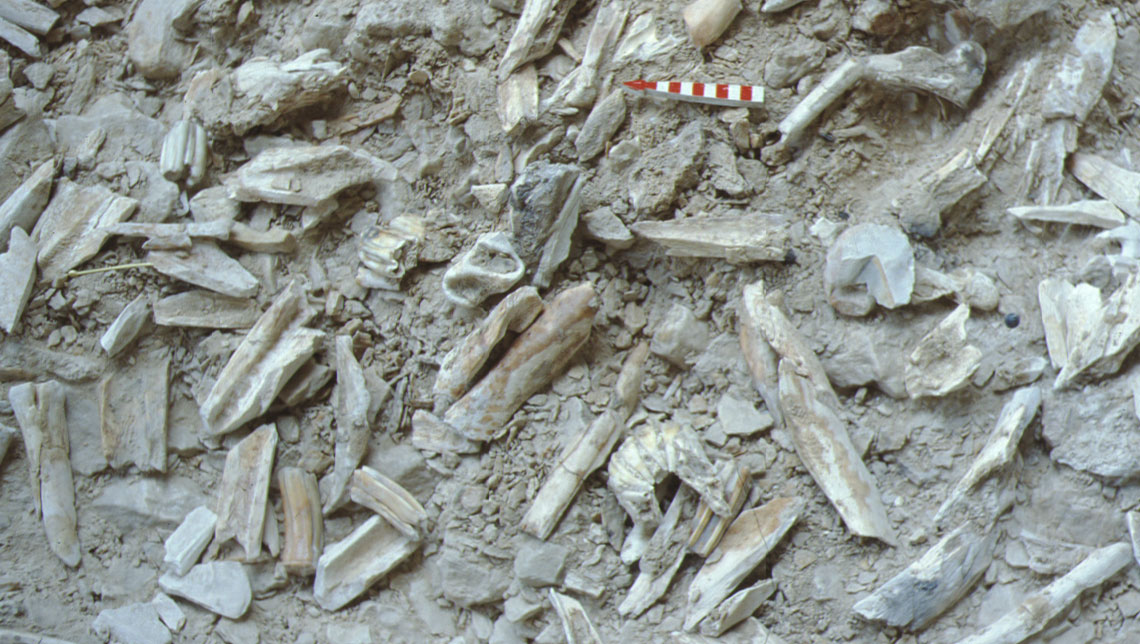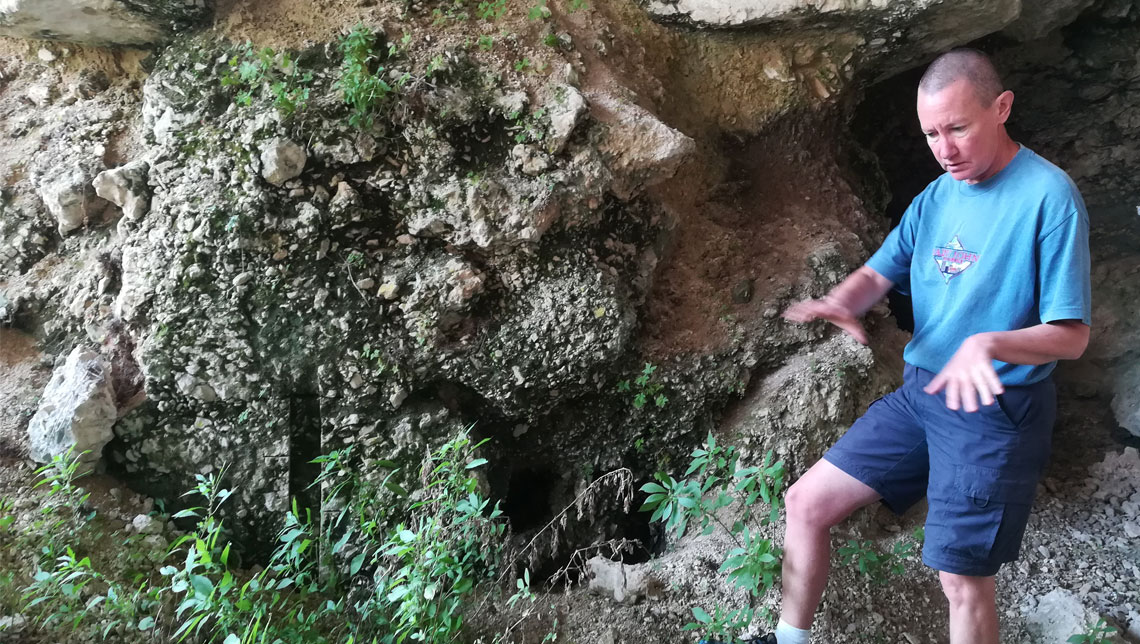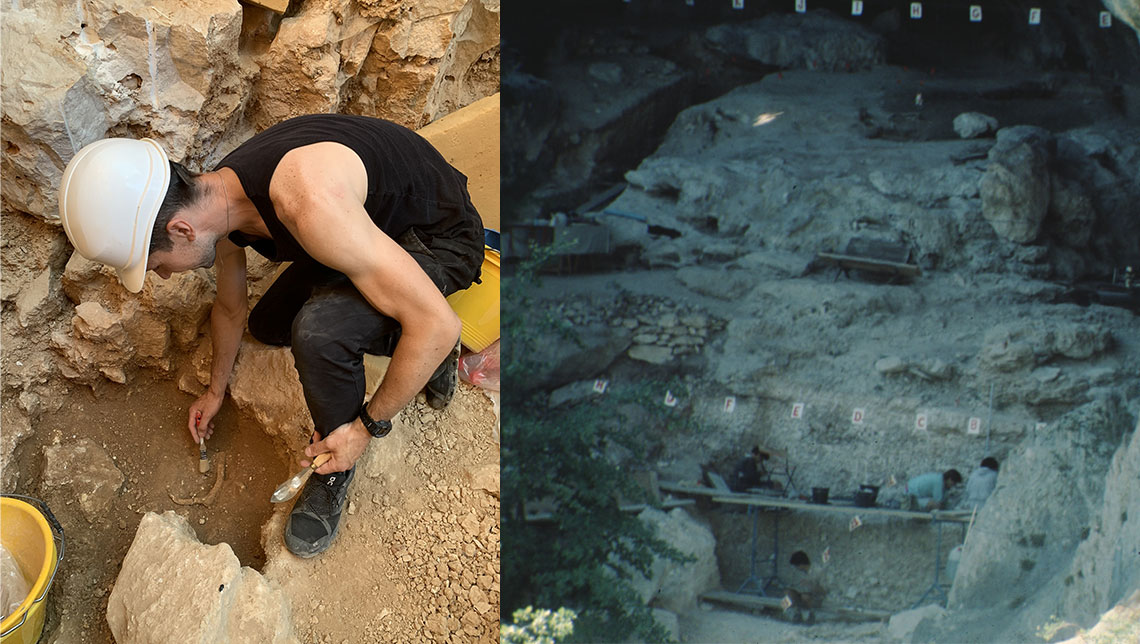Research with Impact
ALUMNI NEWS MAGAZINE | Fall 2022
When Lucy Wilson (BA’83) makes her annual trek to the Vaucluse region of France, it’s not the Roman ruins or the medieval ramparts that draw her eye – it’s the hidden world of prehistoric life concealed in the area’s geology.
Dr. Wilson, a geoarchaeologist and professor at UNB Saint John, is part of a unique discipline in the study of human history, one that searches for traces of our distant ancestors in the stone objects they left behind.
Her focus is on Neanderthals and their precursors in the Middle and Lower Palaeolithic periods in southern France, as well as in several other locales. This takes the record back at least 100,000 to 300,000 years and involves the extraordinarily difficult work of extracting evidence of archaic human behaviour from a small amount of material. For Dr. Wilson, that evidence is in the raw materials used to fashion stone implements.
“Geoarchaeology is the interaction between geology and archaeology, and many geoarchaeologists study landforms and soil development within an archaeological context,” she says. “But I see it as a broader field that also includes studying the rocks that stone tools are made from, which is what I do. It’s about applying the tools of geology to solve archaeological questions.”

The characteristics of the landscape constrain which activities are possible, just as social and cultural habits condition people’s connection with the environment. Dr. Wilson says geoarchaeology is about finding the traces of these interactions and using them to reconstruct how people in the past behaved in their environmental context.
“I have done some work in North America, including some here in New Brunswick,” she says, adding that human settlements in the province are relatively modern, reaching back about 10,000 or 11,000 years.
“But my focus has always been on hominids who are not yet modern, because I’m curious about what they were capable of. With older forms, we don’t know what they could do and most of the time we don’t know what they did do. I did my doctorate in France and carried on working there up until the present day. I’ve also worked on a project in Israel since 2013.”

A doctoral student, Peter Mears (BSc’20), works with Dr. Wilson at the French and Israeli sites. Dr. Wilson says the Israeli sites are mainly Lower Palaeolithic, 200,000 to 400,000 years old. The stone material from such ancient sites includes tools that were used for butchery, hunting and preparing hides for tanning.
Dr. Wilson says archaeologists can tell from marks on the tools whether they were used on wet or dry hides, or on wood, but the hides and wooden objects did not survive the passage of time.
Dr. Wilson tracks where the raw material for the stone was found. It’s then possible to work out patterns from that information.
“We can take a multi-layered site that covers a couple of hundred thousand years of prehistory and look at it layer by layer,” she says. “In one layer, we may find that ease of access (to raw material) was more important than the characteristics of the raw material itself. Then in another layer, we may find the characteristics of the raw material were more important – they wanted good raw material.”
“What were they doing? Were they bringing raw material to the site or moving around the countryside with prepared finished tools they used over and over? What kinds of animals were they hunting and eating? Were they using fire, and how much were they using it? You add it all into the mix and try to understand what was going on.”
She says bones found in the sites indicate Neanderthals hunted species of early horses that roamed the area, as well as the ancestor of the cow – a larger, meaner creature called the aurochs. There was also a type of mountain goat, amongst other animals.
“It all adds up to make a complex picture,” she says. “These were people who were always moving around.”

“One site I worked on, there was every sign they were there for a few days. They caught a couple of horses, brought them to the site, butchered the horses, tanned the hides and then they left. It is a very precise few days in time for one group of hunters. That is unusual. Usually, a group of people came, they stayed a couple of days, they went away and left stuff behind. Another group of people came umpteen years later, they stayed a few days, they mixed their stuff with what the other people had left behind and then they went away. It keeps getting repeated over and over and everything gets mixed so you have maybe hundreds or thousands of years of sporadic visits looking as if they are one. You have to understand, we have really messy pictures here.”
Dr. Wilson is from New Brunswick and studied at UNB. She first taught at UNB in 1988, then returned permanently in 1995 and is a full professor. The courses she teaches include geoarchaeology, a subject that is rarely taught in North America.
She returns every summer to the Vaucluse region of southern France to do fieldwork. “I accidentally have to work in a beautiful place,” she says.
“From a Neanderthal point of view, the area is great. It’s dry but there were sources of water. There were lots of different animals, different habitats and a variety of food and lots and lots of flint to make your stone tools out of. It’s a great place for prehistoric humans, and for modern ones too.”
Dr. Wilson believes we need to understand the past to have any clue about the future, and that there are many lessons to be gleaned from the lives of prehistoric peoples.
“Their cultures were very different from ours, but they had to adapt to rapid climate change,” she says.
“We often underestimate how variable climate has been in the past. We have lived through about 10,000 years of a fairly stable climate. There have been fluctuations but the climate has been pretty stable for the entire length of human history and we have come to believe that is normal. But if you look beyond that, there were rapid and wild changes in climate – in some cases within a person’s lifetime, from the full-on ice age to hotter than it is now. We underestimate how people in the past had to deal with that sort of change. But they did, and they survived. Here we are. Flexibility is the key to that.”